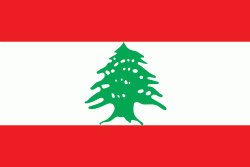Rashaya District (Caza de Rachaïya)
Rashaya District (قضاء راشيا) is an administrative district in the Beqaa Governorate of the Republic of Lebanon. Most of Rachaya's population are Druze with a Sunni and Shia and Christian minority. Many people of Rachaya have left for larger cities in Lebanon such as Beirut. During the Lebanese civil war, Rachaya was not affected as much as other parts of Lebanon during the conflict.
Rachaya is known for its pottery and famous for the Church bells made in the town, the town is right next to the Anti-Lebanon mountain range in bordering Syria.
Rachaya is known for its pottery and famous for the Church bells made in the town, the town is right next to the Anti-Lebanon mountain range in bordering Syria.
Map - Rashaya District (Caza de Rachaïya)
Map
Country - Lebanon
 |
 |
| Flag of Lebanon | |
The earliest evidence of civilization in Lebanon dates back to 5,000 BCE. From c. 3200–539 BC, it was home to the flourishing Phoenician civilization before being annexed by various Near Eastern empires. In 64 BC, the Roman Empire conquered the region, and the region became a major center for Christianity under the Byzantine Empire. In the 7th century, the Muslim conquest of the Levant established caliphal rule. The 11th century saw the start of the Crusades and the establishment of Crusader States in the region only for it to be later reclaimed by the Ayyubids and Mamluks before being ceded to the Ottoman Empire in the 16th century. Under Sultan Abdulmejid I, the first Lebanese protostate took form in the 19th century as the Mount Lebanon Mutasarrifate, created as a home for the Maronite Christians under the Tanzimat reforms.
Currency / Language
| ISO | Currency | Symbol | Significant figures |
|---|---|---|---|
| LBP | Lebanese pound | لل | 2 |
| ISO | Language |
|---|---|
| AR | Arabic language |
| HY | Armenian language |
| EN | English language |
| FR | French language |















